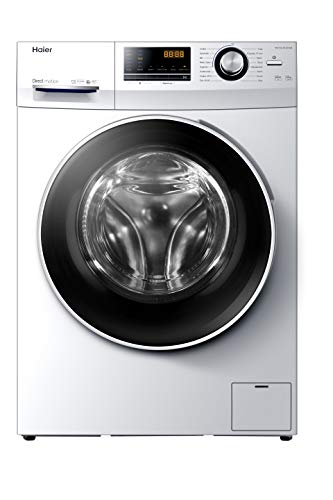What's The Current Job Market For 10kg Front Loader Professionals Like?
Why Buy a 10kg Front Loader? The front-loader of 10kg is ideal for large loads of laundry, with 13 wash programs that include handwash as well as plenty of space to accommodate large wash cycles. With smart tech and advanced features, it's a perfect partner for your laundry at home.  Front loaders generally take longer to wash, are not available in larger capacities and often be prone to mildew and mould. They are more energy and water efficient than top-loaders. Energy The major energy expense of a 10kg front loader is electricity to heat water to operating temperature and also to run the motor. These costs can also be offset by a lower energy consumption when compared to top-loaders. This means less power used during the spin cycle and agitation cycles and the use of less water. Certain machines come with a low-water wash option that requires significantly less water than the cotton cycle, which saves on both energy and water consumption. In general, front-load washers use less detergent than top-loaders, and the tumbling action inside the drum draws air into it to reduce foamy suds and overflows without affecting the cleaning process. However, the door seals and bellows can be more prone to wear than the bellows in top-loaders. Additionally, a top-loader's mechanical agitator could cause significant wear and abrasion of fabrics for clothing, since it forces clothes against each with paddles that constantly drop and drag them through the wash. This abrasion can be gauged by the amount of fabric that accumulates in a clothes dryer's lint filters, as the majority of lint is made up of stray fibers detached from clothing during drying and washing. washers and dryers -loaders have been designed to run at slower speeds and can also have the “freshening cycle” to clean the bellows or mechanical gears regularly. Water Top-load washers need an agitator or impeller to push detergent and water through clothing, which causes mechanical wear and abrasion. Front-loaders, on the other hand, use paddles that gently lift and drop clothing inside a spinning drum for cleaning, which reduces wear. The amount of lint in dryer lint filter can be used to estimate the wear rate. Lint is mostly made up of stray threads that are removed from clothes when drying and washing. Because front-load machines require a lower level of water than top-loaders which means they are less prone to leakage. True front-loaders might require a bellows or seal to keep water from spraying out of the open door during operation, but they do not typically require maintenance as regularly as their counterparts on top-loaders. Additionally, front-loaders can operate with cold water or hot and a lot of them without any external heating source, making them more energy efficient than most top-loaders. This efficiency can lower the cost of running the same laundry load, particularly in areas where water, detergent and energy are expensive.
Front loaders generally take longer to wash, are not available in larger capacities and often be prone to mildew and mould. They are more energy and water efficient than top-loaders. Energy The major energy expense of a 10kg front loader is electricity to heat water to operating temperature and also to run the motor. These costs can also be offset by a lower energy consumption when compared to top-loaders. This means less power used during the spin cycle and agitation cycles and the use of less water. Certain machines come with a low-water wash option that requires significantly less water than the cotton cycle, which saves on both energy and water consumption. In general, front-load washers use less detergent than top-loaders, and the tumbling action inside the drum draws air into it to reduce foamy suds and overflows without affecting the cleaning process. However, the door seals and bellows can be more prone to wear than the bellows in top-loaders. Additionally, a top-loader's mechanical agitator could cause significant wear and abrasion of fabrics for clothing, since it forces clothes against each with paddles that constantly drop and drag them through the wash. This abrasion can be gauged by the amount of fabric that accumulates in a clothes dryer's lint filters, as the majority of lint is made up of stray fibers detached from clothing during drying and washing. washers and dryers -loaders have been designed to run at slower speeds and can also have the “freshening cycle” to clean the bellows or mechanical gears regularly. Water Top-load washers need an agitator or impeller to push detergent and water through clothing, which causes mechanical wear and abrasion. Front-loaders, on the other hand, use paddles that gently lift and drop clothing inside a spinning drum for cleaning, which reduces wear. The amount of lint in dryer lint filter can be used to estimate the wear rate. Lint is mostly made up of stray threads that are removed from clothes when drying and washing. Because front-load machines require a lower level of water than top-loaders which means they are less prone to leakage. True front-loaders might require a bellows or seal to keep water from spraying out of the open door during operation, but they do not typically require maintenance as regularly as their counterparts on top-loaders. Additionally, front-loaders can operate with cold water or hot and a lot of them without any external heating source, making them more energy efficient than most top-loaders. This efficiency can lower the cost of running the same laundry load, particularly in areas where water, detergent and energy are expensive.